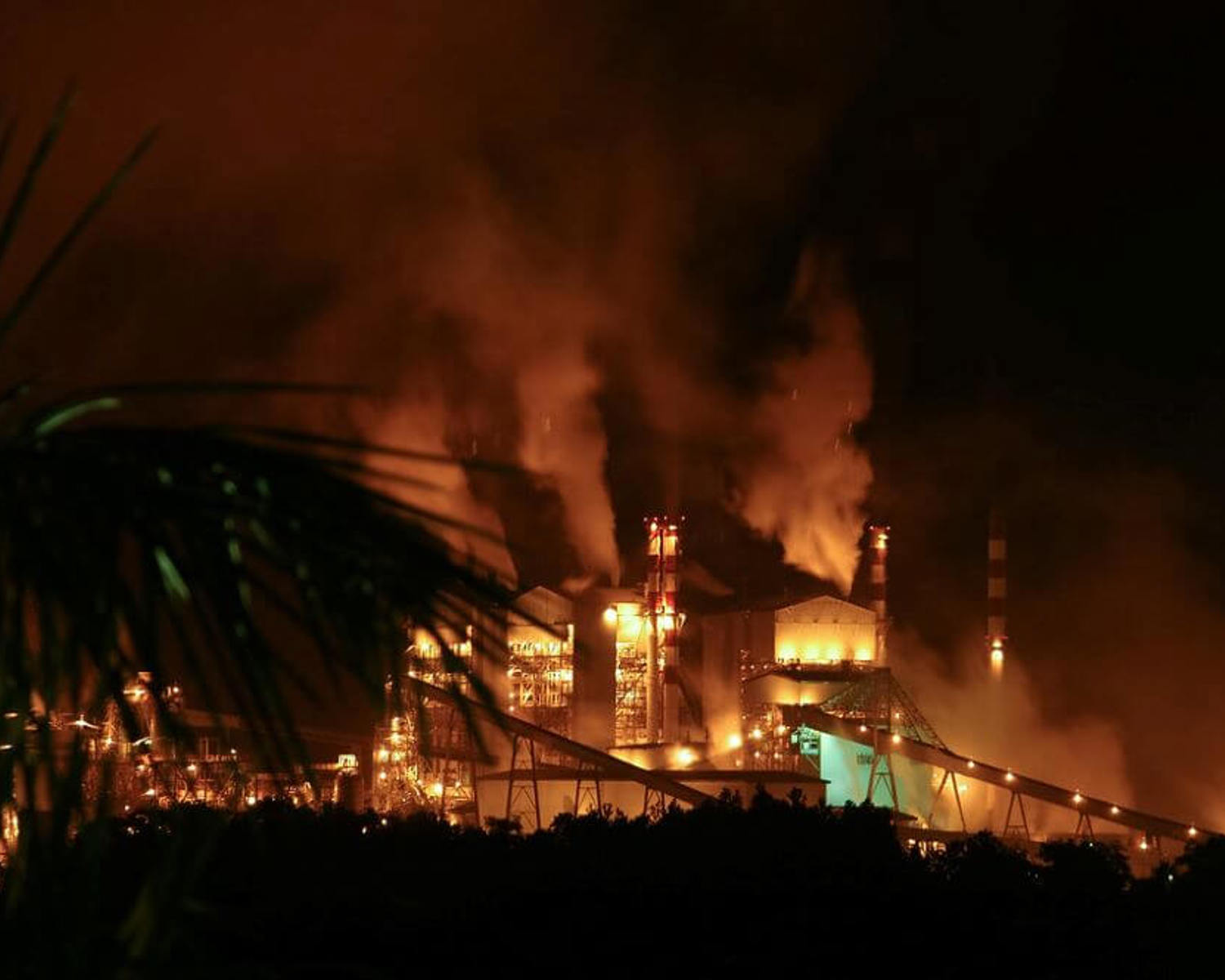Atmospheric methane removal: Solar chimney and photocatalytic semiconductor technology

One of the main issues with methane removal is that atmospheric methane concentrations are very low. This means that very large volumes of air, and related energy demands, are required, making the use of ventilators like those used for DACCS (see direct air capture) more complicated (Nisbet-Jones et al. 2021).
De Richter et al. (2017) first suggested that it might be possible to combine photocatalytic reactors, which would degrade methane into water vapor and CO2, with a solar updraft tower that uses large volumes of air that are passively moved inside it by incoming solar radiation to power generators. De Richter et al. (2016 & 2017) suggest multiple solar chimney power plants with photocatalytic reactors (SCPP-PCR) could potentially produce renewable energy and process large enough amounts of air to significantly reduce methane levels.
Analysis overview

Technological Readiness Level (TRL)
Low 1
Solar chimneys have been in use for a long time in warmer regions of the world. The first ideas to combine the passive system with power generation were proposed in the 70s (Zhou et al, 2010; Kasaeian et al, 2017). Multiple small pilot plants have since been built. The largest of these was already constructed in Spain in the 1980s. Recently, interest in the technology seems to have been growing, with multiple studies exploring different elements of its design and effectiveness (See for example Ming et al, 2021; or Xiong et al, 2023). However, apart from the pilot plants, the technology has not yet been operationalised or commercialized, and questions remain about ultimate feasibility to scale.
The other part of this technology is the photocatalytic methane removal systems. These are already in use in various forms (Wang et al, 2022). With growing interest in methane removal technologies, the development of such photocatalytic technologies is also advancing (Li et al., 2019). However, scaling up is a major issue of concern to all methane mitigation technologies, given the large amounts of air required (Lackner, 2020; Jackson, 2021). Although new studies are exploring crucial issues (see for example Ming et al, 2021 and Huang et al, 2021), studies will have to provide experimental data and show how effective and scalable such a system can be.
Cobo et al's (2023) review assigns photocatalytic methane degradation in general a low technological readiness level of 3 to 4.
Technological Readiness Level (TRL)
A technology with a TRL of 1-3: TRL 1 – Basic; TRL 2 – Concept formulated; TRL 3 – Experimental proof of concept

Scalability
Unknown 0
Scaling up is a major issue of concern to all methane mitigation technologies, given the large amounts of air required (Lackner, 2020; Jackson, 2021). Huang et al (2021) already showed that size of the towers would significantly influence the system’s efficiency. Nisbet-Jones et al (2021) note that the use of solar towers for energy generation seemed to be best feasible through especially large structures, but that it is not sure if this holds true for methane removal too.
Because solar towers depend on solar radiation to function, it is likely that physically scaling across the globe will not see similar efficiency rates, and greatest efficiency will be achievable in parts of the globe with the greatest amount of sun hours.

Timeliness for near-future effects
Unknown 0

Northern + Arctic potential
Low 1
Given this technology’s dependency on sunlight, it is likely the Arctic is not the most promising for such structures. Although variants to a chimney system have been proposed for the Polar regions (see Polar chimneys).
Northern + Arctic potential
No noticeable extra positive effect beyond the global average; technology is unsuited to the Arctic

Global potential
Unknown 0

Cost - benefit
Unknown 0

Environmental risks
Unknown 0

Community impacts
Unknown 0

Ease of reversibility
Easy 3

Risk of termination shock
Low risk 3
Risk of termination shock
Low or insignificant termination shock or damage

Legality/governance
Possible 3
Legality/governance
Currently legal to deploy, with governance structures in place to facilitate it and/or financial incentives to develop it

Scientific/media attention
Medium 2
Scientific/media attention
Some attention within the scientific community, including published research and funding programmes; some media attention; some commercial interest
References
Cobo, S., Negri, V., Valente, A., Reiner, D. M., Hamelin, L., Mac Dowell, N., & Guillén-Gosálbez, G. (2023). Sustainable scale-up of negative emissions technologies and practices: where to focus. Environmental Research Letters, 18(2), 023001. https://doi.org/10.1088/1748-9326/acacb3
Huang, Y., Shao, Y., Bai, Y., Yuan, Q., Ming, T., Davies, P., ... & Li, W. (2021). Feasibility of solar updraft towers as photocatalytic reactors for removal of atmospheric methane–the role of catalysts and rate limiting steps. Frontiers in chemistry, 9, 745347. https://doi.org/10.3389/fchem.2021.745347
Jackson, R. B., Abernethy, S., Canadell, J. G., Cargnello, M., Davis, S. J., Féron, S., ... & Zickfeld, K. (2021). Atmospheric methane removal: a research agenda. Philosophical Transactions of the Royal Society A, 379(2210), 20200454. https://doi.org/10.1098/rsta.2020.0454
Kasaeian, A. B., Molana, S., Rahmani, K., & Wen, D. (2017). A review on solar chimney systems. Renewable and sustainable energy reviews, 67, 954-987. https://doi.org/10.1016/j.rser.2016.09.081
Lackner, K. S. (2020). Practical constraints on atmospheric methane removal. Nature Sustainability, 3(5), 357-357. https://doi.org/10.1038/s41893-020-0496-7
Liu, Y., Ming, T., Peng, C., Wu, Y., Li, W., De Richter, R., & Zhou, N. (2021). Mitigating air pollution strategies based on solar chimneys. Solar Energy, 218, 11-27. https://doi.org/10.1016/j.solener.2021.02.021
Ming, T., Caillol, S., & Liu, W. (2016). Fighting global warming by GHG removal: Destroying CFCs and HCFCs in solar-wind power plant hybrids producing renewable energy with no-intermittency. International Journal of Greenhouse Gas Control, 49, 449-472. https://doi.org/10.1016/j.ijggc.2016.02.027
Ming, T., Davies, P., Liu, W., & Caillol, S. (2017). Removal of non-CO2 greenhouse gases by large-scale atmospheric solar photocatalysis. Progress in Energy and Combustion Science, 60, 68-96. https://doi.org/10.1016/j.pecs.2017.01.001
Ming, T., Gui, H., Shi, T., Xiong, H., Wu, Y., Shao, Y., ... & de Richter, R. (2021). Solar chimney power plant integrated with a photocatalytic reactor to remove atmospheric methane: A numerical analysis. Solar Energy, 226, 101-111. https://doi.org/10.1016/j.solener.2021.08.024
Ming, T., Li, W., Yuan, Q., Davies, P., De Richter, R., Peng, C., ... & Zhou, N. (2022). Perspectives on removal of atmospheric methane. Advances in Applied Energy, 100085. https://doi.org/10.1016/j.adapen.2022.100085
Nisbet-Jones, P. B., Fernandez, J. M., Fisher, R. E., France, J. L., Lowry, D., Waltham, D. A., ... & Nisbet, E. G. (2022). Is the destruction or removal of atmospheric methane a worthwhile option?. Philosophical Transactions of the Royal Society A, 380(2215), 20210108. https://doi.org/10.1098/rsta.2021.0108
Wang, Q., Xiong, H., & Ming, T. (2022). Methods of Large-Scale Capture and Removal of Atmospheric Greenhouse Gases. Energies, 15(18), 6560. https://doi.org/10.3390/en15186560
Wu, Y., Ming, T., de Richter, R., Höffer, R., & Niemann, H. J. (2020). Large-scale freshwater generation from the humid air using the modified solar chimney. Renewable Energy, 146, 1325-1336. https://doi.org/10.1016/j.renene.2019.07.061
Xiong, H., Ming, T., Wu, Y., Li, W., Mu, L., de Richter, R., ... & Peng, C. (2023). Numerical analysis of a negative emission technology of methane to mitigate climate change. Solar Energy, 255, 416-424. https://doi.org/10.1016/j.solener.2023.02.048
Zhou, X., Wang, F., & Ochieng, R. M. (2010). A review of solar chimney power technology. Renewable and Sustainable Energy Reviews, 14(8), 2315-2338. https://doi.org/10.1016/j.rser.2010.04.018
Zuo, L., Liu, Z., Ding, L., Qu, N., Dai, P., Xu, B., & Yuan, Y. (2020). Performance analysis of a wind supercharging solar chimney power plant combined with thermal plant for power and freshwater generation. Energy Conversion and Management, 204, 112282. https://doi.org/10.1016/j.enconman.2019.112282








